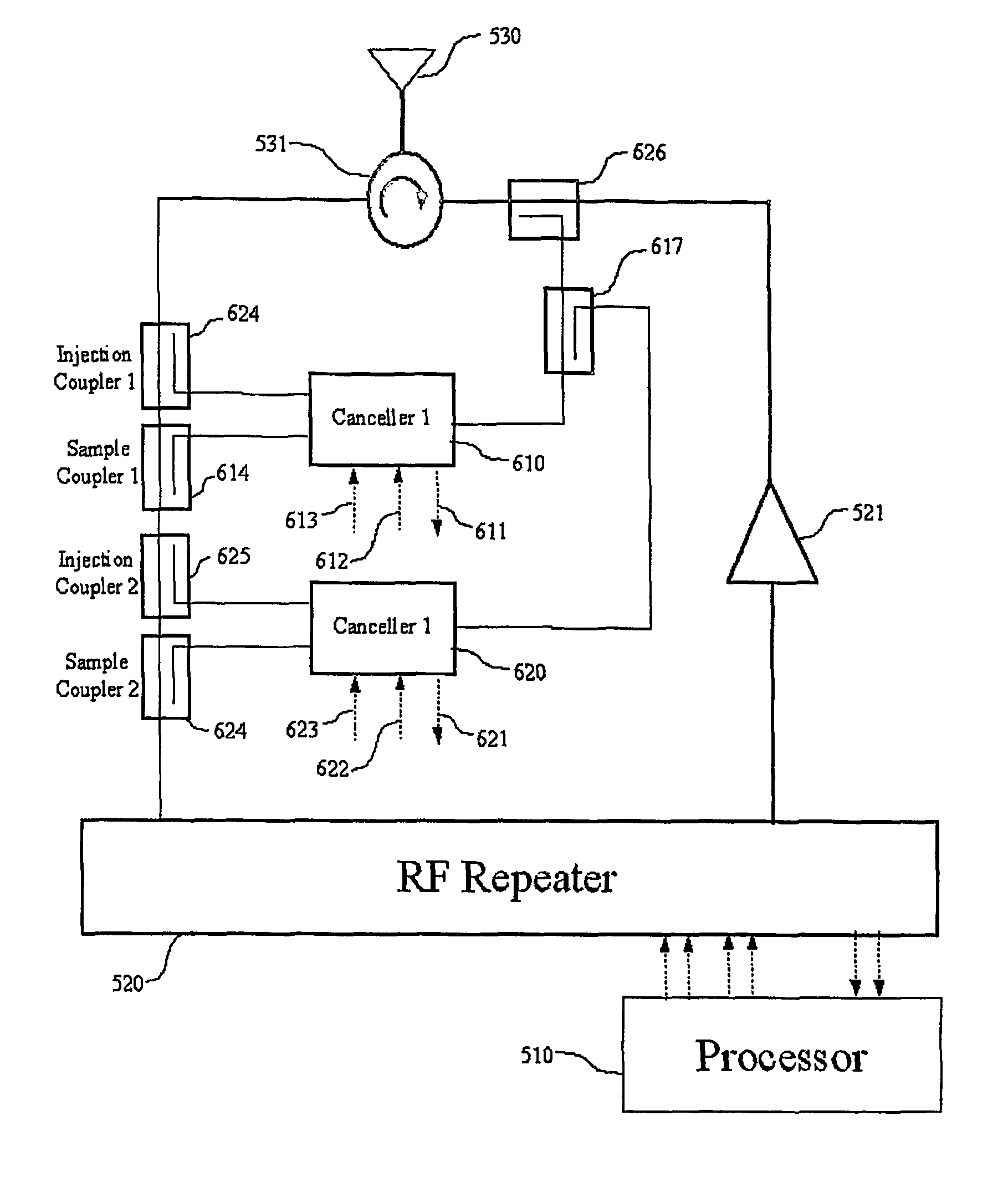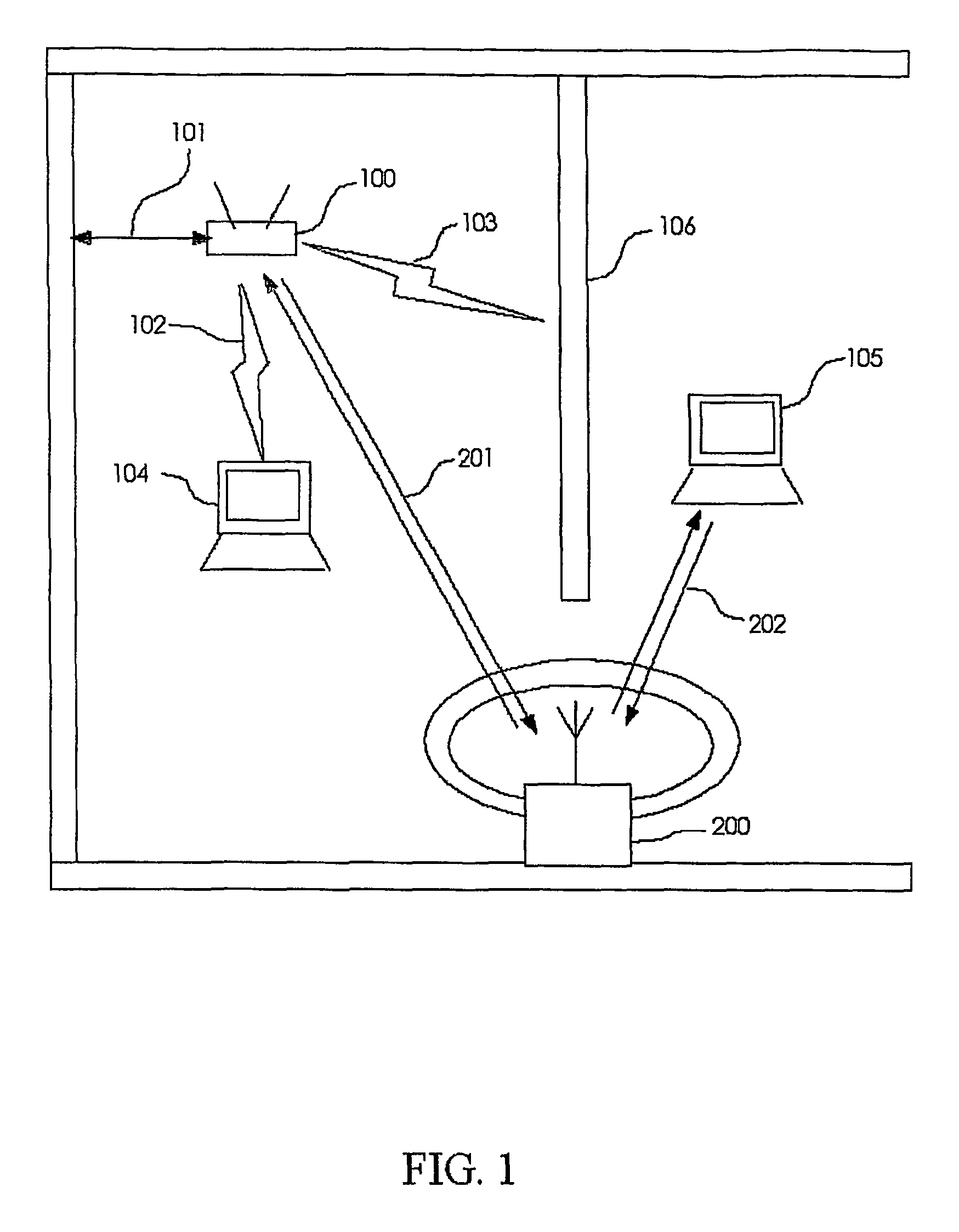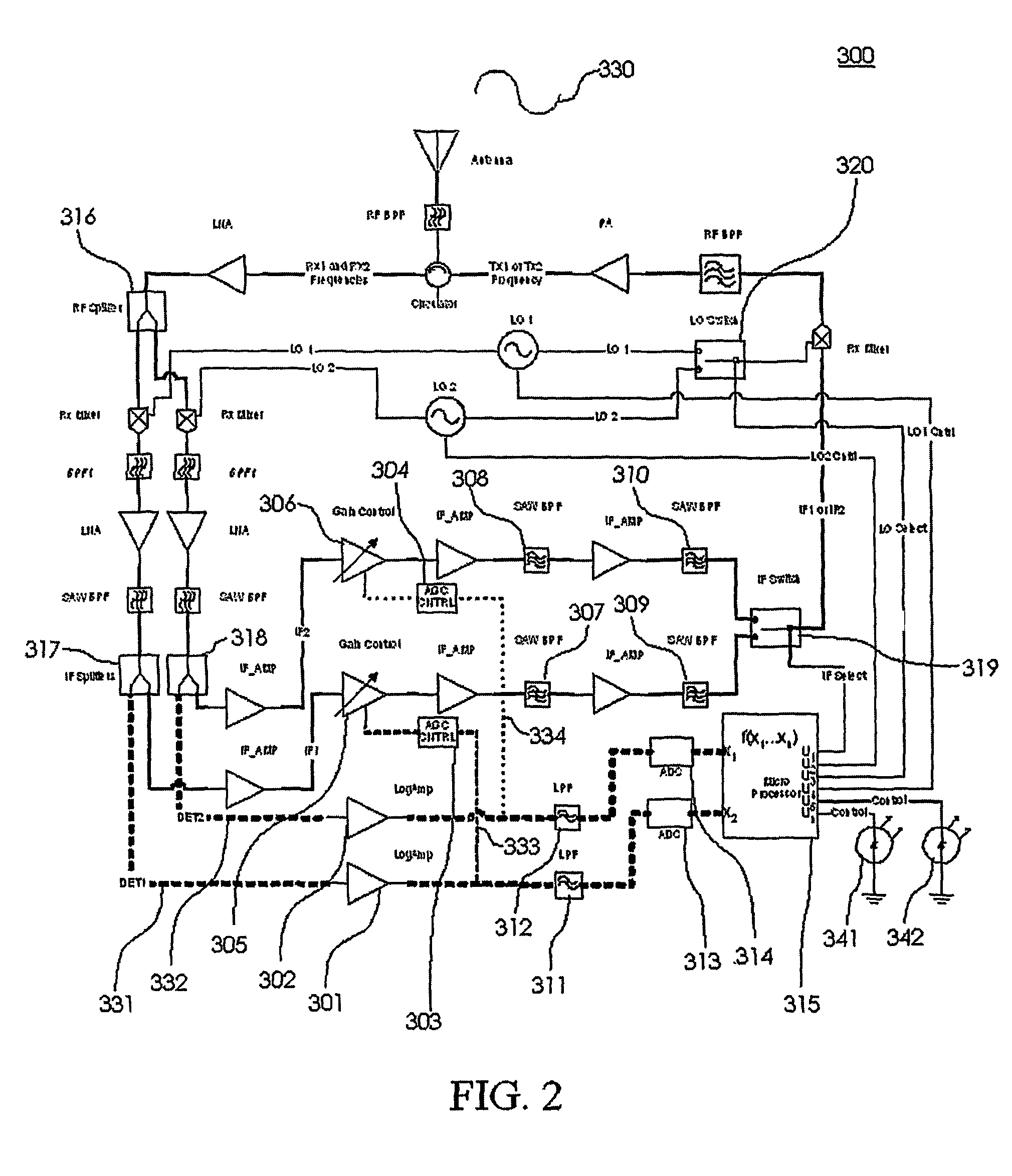Transmission canceller for wireless local area network
a technology of wireless local area network and canceller, which is applied in the direction of repeater/relay circuit, transmission monitoring, pulse technique, etc., can solve the problems of slow signal detection, analogous problems may be observed in tdd frequency translating repeaters, and ineffective removal of broadband rf noise from the transmitter located in the same frequency band as the receive signal, etc., to achieve fast initial decision, low latency detection, and more accurate and controllable final decision
- Summary
- Abstract
- Description
- Claims
- Application Information
AI Technical Summary
Benefits of technology
Problems solved by technology
Method used
Image
Examples
Embodiment Construction
[0028]This application is related to PCT Application PCT / US03 / 16208 entitled WIRELESS LOCAL AREA NETWORK REPEATER, the contents of which are incorporated herein by reference. Referring now to FIG. 1, a wide area connection 101, which could be, for example, an Ethernet connection, a Ti line, a wideband wireless connection or any other electrical connection providing a data communications path, may be connected to a wireless gateway, or access point (AP) 100. The wireless gateway 100 sends RF signals, such as IEEE 802.11 packets or signals based upon Bluetooth, Hyperlan, or other wireless communication protocols, to client units 104, 105, which may be personal computers, personal digital assistants, or any other devices capable of communicating with other like devices through one of the above mentioned wireless protocols. Respective propagation, or RF, paths to each of the client units 104, 105 are shown as 102, 103.
[0029]While the signal carried over RF path 102 is of sufficient stre...
PUM
 Login to View More
Login to View More Abstract
Description
Claims
Application Information
 Login to View More
Login to View More - R&D
- Intellectual Property
- Life Sciences
- Materials
- Tech Scout
- Unparalleled Data Quality
- Higher Quality Content
- 60% Fewer Hallucinations
Browse by: Latest US Patents, China's latest patents, Technical Efficacy Thesaurus, Application Domain, Technology Topic, Popular Technical Reports.
© 2025 PatSnap. All rights reserved.Legal|Privacy policy|Modern Slavery Act Transparency Statement|Sitemap|About US| Contact US: help@patsnap.com



